Gender 2.0 is a system of symbols to help people communicate what pronouns and forms of address they use
The symbols
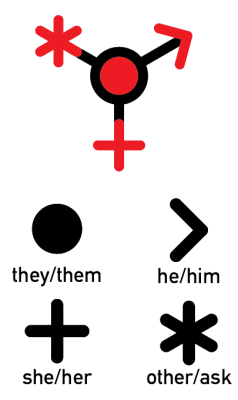
How it works
There a four symbols which can be displayed under one’s eyes to indicate what pronouns and forms of address are appropriate
● Circle or Dot means you should use they/them pronouns and neutral forms of address
> Arrow or V means you should use he/him and masculine coded forms of address
+ Cross or ⨯ means you should use she/her and feminine coded forms of address
✱ Star or Asterisk means you should default to neutral forms of address and ask politely
You can use just one, use the same symbol under both eyes, or mix and match as needed. The rotation and relative placement of the symbols is a matter of aesthetic preference and does not change the meaning of the symbols.
Some Examples
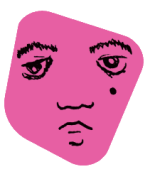
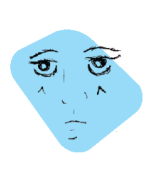
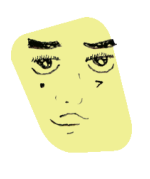
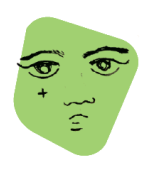
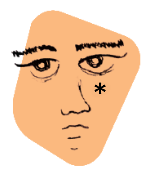
I use…
Depending on the person this could mean using neopronouns, alternating pronouns, any pronouns, or something else.
Try to avoid making assumptions until you can politely ask.
Anyone can use these symbols but they may be especially useful for:
- People whose bodies and/or gender presentation does not align with the traditional associations and assumptions that many people use when gendering others
- Nonbinary people and anyone else who uses they/them or other less common pronouns
- People who are questioning or experimenting with gender and want to ‘try on’ different pronouns
- Gender fluid folks and other people who use different pronouns at different times
- Cisgender people who want to help normalize the use of these symbols
- Anyone who wants to present their gender as an affirmatively chosen identity rather than something assumed or projected on to them.
Questions & Answers
Why “Gender 2.0”?
If you’re asking “why use such a goofy name?” It’s a tongue-in-cheek way to reference that this system is an ‘upgrade’ to the social software that is gender; adding new features to expand its usefulness and fixing some of the ‘bugs’ that it has when dealing with some trans, nonbinary, and gender nonconforming folks.
If you’re asking “why invent this in the first place?” The answer is because there is an unmet need. Everyone wants to be gendered correctly and most people, I would hope, want to gender others in a way that validates the experience and expressed wishes of the person they are talking about. Like it or not the widespread social practice of guessing the gender of everyone you encounter is not likely to go away any time soon. Since most people expect to be able to correctly gender someone based on a superficial visual assessment the goal of these symbols is to provide a more accurate and unambiguous way to communicate this information. The concept started as an attempt to address the problem that there’s no practical way to ‘look nonbinary’ in a way that would allow strangers to use they/them for you unprompted and was then expanded to make it useful for people who use other pronouns as well.
Why marks on your face?
The markings being ‘in your face’ is intentional. Faces contain many of the features we use for guessing the gender of people we meet. Placing the marks on your face allows them to be included in that determination process and to, hopefully, override the other features and factors that we traditionally use in favor of this intentionally chosen one. Things like pronoun pins can easily be ignored or missed, even by people who want to get it right, while facial markings are much more likely to be noticed.
This sounds complicated, isn’t this a lot to have to explain?
Folks who use less common pronouns already have to explain their pronouns all the time if they want to be gendered correctly. If you are already going to have to explain your pronouns to everyone you meet why not do so in a way that makes it so that the next time the person you explained it to meets someone using the symbols they can correctly gender that person without needing an explanation.
Can I use [symbol] if I am [identity]?
These symbols are intended to communicate pronouns and other elements of how to talk to and about people. The symbols should not be assumed to be a proxy for any specific gender identity. Anyone of any gender can use any of these symbols or any combination. As with all gender related signifier, some symbols will be more common among certain genders but if you use a given pronoun you are allowed to use the symbols indicating that is the proper way to address you regardless of your gender identity.
Do I have to use these symbols?
Of course not! These symbols are meant to be a tool for gender expression and communication but they are by no means mandatory. Part of the value of these symbols, as opposed to other features we associate with gender such as body type, is that they are affirmatively chosen which includes the option to choose not to use them for any reason. It is also important to recognize that while these symbols are meant to help folks who are ‘out’ about their identity communicate that more clearly to others there are many reasons why people can’t be open about their identity in all circumstances.
How can I help?
You can become a Beta Tester by trying it out for yourself and helping to spread the word.